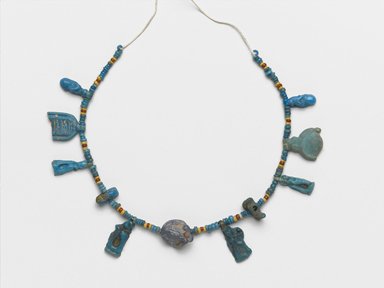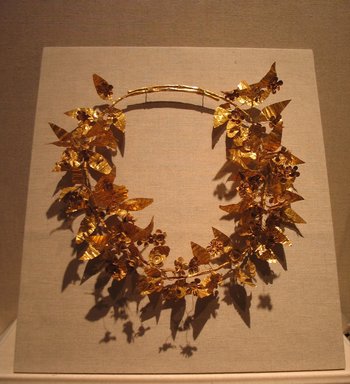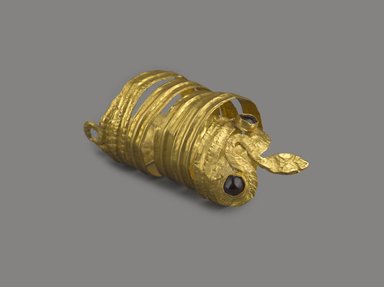Some of the examples are
 Two Earrings, from Brooklyn museum 1539-1292 B.C.E.
Two Earrings, from Brooklyn museum 1539-1292 B.C.E.
 Single-Strand Necklace, Brooklyn Museum 13 32-1292 B.C.E.,
Single-Strand Necklace, Brooklyn Museum 13 32-1292 B.C.E.,
Ring with Cat and Kittens, MET Museum, 1295-664 B.C.
 Wreath, Brooklyn Museum 3rd century-2nd-century B.C.E.
Wreath, Brooklyn Museum 3rd century-2nd-century B.C.E.
 Ring in the Form of a Coiled Serpent from Brooklyn Museum 3rd century B.C.E.
Ring in the Form of a Coiled Serpent from Brooklyn Museum 3rd century B.C.E.
Gold Necklace from MET Museum 4th-3rd century B.C.
Each piece goes in depth of what values that people hold, and the significance of each piece. Some are to help ward off evil and protect people, whereas some are to glorify the status of people. Not only do they go in-depth with details and meanings, but they also show the status and value of the wearer.


